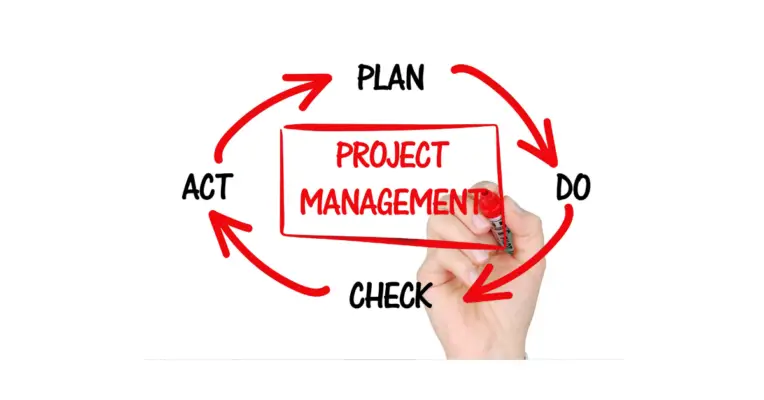Environmental project management is critical in organizations that uphold environmental responsibility and sustainable practices.
As leaders in this space, environmental project managers must steer environmental-related projects within regulatory bounds, leveraging their well-honed project management skills, understanding of environmental laws, and ability to tackle industry-specific challenges.
This insightful article aims to delve into the intricate facets of environmental project management, exploring the roles and responsibilities, qualifications, regulatory landscape, challenges, and real-world case studies that circumscribe the role of an environmental project manager.
Role and Responsibilities of an Environmental Project Manager
Roles and Duties of an Environmental Project Manager
Environmental Project Managers are professionals in planning, managing, and implementing projects to preserve or improve the environment. These projects may vary greatly in nature and scale, ranging from small-scale local initiatives to large environmental restoration or conservation projects.
Managing and overseeing such projects is the heart of an Environmental Project Manager’s role. This often entails delivering projects on time and within budget while ensuring high-quality outputs.
This requires superior project management skills, including strategic planning, risk management, and organizational abilities.
Adherence to Environmental Regulations and Standards
One of the critical duties of an Environmental Project Manager is ensuring the adherence to environmental regulations and laws.
This involves a thorough understanding of these laws and regulations and the ability to translate them into practical, actionable measures.
This often entails collaborating with legal experts, environmental scientists, and other professionals to meet all environmental standards, regulations, and best practices.
Team Coordination and Liaising with Clients and Stakeholders
Environmental Project Managers often lead multidisciplinary teams comprising scientists, engineers, environmental planners, and other professionals.
Managing and coordinating these teams is an integral part of their role. This involves task delegation, resource allocation, and facilitating communication among team members.
Equally important is the role of an Environmental Project Manager in liaising with external stakeholders. These may include clients, government officials, community members, investors, and other parties interested in the project.
Environmental Project Managers typically play a crucial role in explaining the projects to stakeholders, addressing their concerns, and securing their support.
Maintaining Safety and Risk Assessment
Another key responsibility of an Environmental Project Manager is ensuring both human and environmental safety.
This often involves risk assessments to identify any potential hazards, taking proactive measures to mitigate these risks, and implementing contingency plans when necessary.
It also ensures that all project activities comply with health and safety regulations.
Understanding the Role of an Environmental Project Manager
An environmental project manager requires a comprehensive understanding of environmental science to make informed decisions and recommendations that are necessary for managing successful projects.
Coupled with hands-on experience and a robust expertise in modern project management methodologies and tools, these professionals are tasked with leading teams, managing projects, and balancing the needs of various stakeholders.
Due to the wide scope of responsibilities and wide-ranging nature of projects, adaptability, problem-solving, and strong communication skills are invaluable assets for an environmental project manager.
Additionally, superior negotiation skills coupled with an ability to function efficiently under pressure can greatly enhance the chances of success in this role.

Necessary Qualifications and Skills for Environmental Project Management
An Overview of the Educational Requirements for Environmental Project Managers
The basic educational requirement for an environmental project manager role is typically a bachelor’s degree in environmental science, environmental engineering, or a related field.
Nevertheless, for more senior roles, employers might prefer candidates with a master’s degree or higher. The curriculum for such roles usually encompasses a variety of disciplines, including environmental policy, chemistry, biology, geology, and physics.
Therefore, preparing for a role as an environmental project manager not only requires practical field experience but also a sound theoretical knowledge base.
Professional Certifications in Environmental Project Management
Professionals in the field often enhance their career prospects by pursuing additional credentials, such as the Certified Environmental, Safety, and Health Trainer (CET) or the Certified Hazardous Materials Manager (CHMM).
These certifications, offered by the Board of Certified Safety Professionals and the Institute of Hazardous Materials Management, confirm the holder’s expertise in managing environmental projects and handling hazardous materials.
Another essential certification for environmental project managers is the Project Management Professional (PMP) certificate.
Provided by the Project Management Institute, this internationally recognized certification indicates a high level of competence in the basics of project management, including planning, executing, and monitoring projects.
Understanding of Environmental Laws and Regulations
A firm grasp of environmental laws and regulations is crucial to effective environmental project management. This might encompass a wide range of laws and regulations at federal, state, and local levels, including the Clean Air Act, the Endangered Species Act, and the National Environmental Policy Act.
An environmental project manager needs to understand these environmental laws to ensure projects comply with all relevant regulations and mitigate non-compliance risks.
Project Management Skills
Successful environmental project managers possess strong project management skills, such as strategic planning, risk management, and budgeting.
Familiarity with project management software can also be beneficial, as these tools often play a critical role in monitoring project progress, managing resources, and fostering collaboration among team members.
Interpersonal Skills
Interpersonal skills are also essential for success in this role. Environmental project managers often work with a diverse team of experts, including scientists, engineers, and regulatory specialists.
As such, they need exceptional communication skills to convey expectations, progress updates, and feedback clearly. Conflict resolution skills are also beneficial, as different team members may have different perspectives or priorities that must be harmoniously balanced.
Adaptability and Problem-Solving Skills
The field of environmental project management is constantly evolving, with new technologies, regulations, and best practices emerging regularly.
Therefore, environmental project managers should be adaptable and able to stay abreast of these changes and adjust their strategies as necessary.
Additionally, problem-solving skills are vital, as unexpected challenges often arise during a project necessitating creative, efficient solutions.
An Inherent Love for the Environment
The driving force behind a successful Environmental Project Manager often lies in their profound love for the environment.
This fervor propels them to continuously learn about environmental issues, develop innovative solutions to tackle them, and maintain an unwavering commitment, all fundamental to efficient environmental project management.

Understanding Environmental Laws and Regulations
Gaining Proficiency in Environmental Laws
Building on this inherent love, conscientious Environmental Project Managers must familiarize themselves with environmental laws, regulations, and norms designed to safeguard our environment, manage our natural resources, and regulate pollution.
These legislative frameworks can differ significantly and may range from local statutes to state and federal laws in the United States.
A thorough understanding of these laws enables the manager to ensure their projects comply with such regulations and are carried out sustainably.
Federal Environmental Legislation
Several important federal laws govern environmental protection in the U.S.A. One of the most comprehensive is the National Environmental Policy Act (NEPA), enacted in 1969, which requires federal agencies to assess the impact of their actions on the environment.
Other significant pieces of federal legislation include the Clean Air Act, the Clean Water Act, and the Endangered Species Act, all of which set strict standards for environmental degradation and specify penalties for non-compliance.
State and Local Regulations
Alongside federal laws, individual states and local jurisdictions also possess unique environmental laws and regulations, working in harmony with federal mandates while taking the specific environmental challenges and resources of their localities into account.
An environmental project manager needs to be familiar with these local and state laws as much as federal ones to implement projects effectively.
Impact on Environmental Project Management
Environmental laws have a significant impact on the work of an environmental project manager. This ranges from the planning phases of a project to its execution and final reporting.
For example, a project may need an Environmental Impact Assessment (EIA) to evaluate and minimize its potential ecological damages in compliance with NEPA.
Additionally, some projects may necessitate acquiring specific permits under the Clean Water Act if they involve the discharge of pollutants into U.S. waters or require adherence to the Endangered Species Act if a project can affect protected wildlife and their habitats.
Furthermore, an environmental project manager must stay updated with changes or revisions in these laws and regulations, which can affect ongoing or future projects.
Understanding and Adhering to Environmental Laws and Regulations
Understanding and adhering to environmental laws and regulations isn’t just about staying compliant and avoiding penalties.
It’s about upholding the ethos of environmental sustainability, minimizing harm to our ecosystems, and preserving the planet for future generations.
Therefore, this forms an integral part of an environmental project manager’s role, making them not just project supervisors but also guardians of the environment.
Emerging Significance of Environmental Project Managers
In today’s corporate landscape, where there has been mounting pressure to adopt sustainable practices, the role and significance of environmental project managers have drastically evolved.
These professionals have become vital workforce constituents, given their expertise in ensuring compliance with environmental laws while promoting sustainability in their projects.
The role of an environmental project manager has thus become a powerful indicator of an organization’s dedication toward environmental responsibility.

Challenges and Solutions in Environmental Project Management
The Complex Maze of Environmental Project Management
Environmental project management encompasses intricate tasks, presenting several unique challenges that separate it from other project management forms.
A prominent challenge is maintaining a balance between costs, initiatives, and their potential values—compounded by factoring in considerations such as regulatory compliance, equipment costs, and unpredictable external events like weather occurrences.
Coupled with this is the critical task of risk management. Environmental projects bear exposure to a multitude of risks, be they technical, financial, legal, or environmental.
Should these risks come to fruition, they can disrupt the project trajectory, inflating costs and generating uncertainty in schedules.
Another complex hurdle in environmental project management lies in satisfying regulatory compliance. Adherence to guidelines from varying authorities—local, state, or national, particularly for projects spanning cross-jurisdictional boundaries can be an arduous task. It requires extensive knowledge and comprehension.
Lastly, managing a diverse and often multi-disciplinary team is another challenge that needs to be surmounted in environmental project management.
To deftly guide teams comprising scientists, engineers, legal and policy experts, and public relations specialists, effective communication strategies are essential to establish a shared understanding of objectives and tasks.
Solutions for Effective Environmental Project Management
Clear and transparent budgeting is a crucial process that can help mitigate cost-related challenges. The initial budgeting and planning phase must incorporate as many foreseeable costs as possible, including regulatory costs and contingency funds for unforeseen events.
Risk management becomes more manageable when seen as an ongoing process throughout the project’s lifecycle rather than a task completed at the project’s outset.
A systematic approach to this includes continuously identifying, analyzing, evaluating, and treating risk to ensure effective risk management.
To successfully navigate the regulatory maze, project managers should aim to familiarize themselves with the regulations pertinent to their project with extensive research.
In complex or international projects, appointing a dedicated regulatory compliance manager or consultation with legal experts could be beneficial.
For effective team management, fostering strong communication channels, clear delineation of roles and responsibilities, and a shared understanding of the project’s aims and objectives are crucial.
Regular team-building activities and workshops can also help to foster a collaborative atmosphere, despite the different professional backgrounds of team members.
Continued education and learning are crucial to staying on top of environmental project management trends, regulations, and best practices.
This can be achieved through a combination of formal learning, such as certificates and workshops, and informal learning, through field experience and self-education.
While environmental project management presents unique challenges, they can be navigated effectively with apt strategies and the right approach.
Such a course of action allows for not just the attainment of specified environmental objectives but the realization of these goals efficiently and effectively bolsters the credibility and standing of all those involved.

Case Studies in Effective Environmental Project Management
Illustrative Case: The Santa Clara Pueblo Forest Restoration Initiative
The Santa Clara Pueblo in New Mexico was severely damaged by wildfires, leading to serious issues like soil erosion, the risk of dangerous landslides, and the disappearance of wildlife habitats.
The Santa Clara Pueblo Forest Restoration initiative was created to rejuvenate the health of the forest ecosystem, minimizing the risk of future fires and protecting the area’s inhabitants.
The environmental project manager in charge of this initiative oversaw its execution. This role involved steering the planning, design, and incorporation of several measures aimed at stabilizing the charred slopes, reviving vegetation cover, and curtailing the threat of future fires.
Wide-ranging knowledge of forest ecology, civil engineering, hydrology, and geology, as well as robust leadership and communication abilities for coordinating with multiple stakeholders like local inhabitants, government agencies, and nonprofits, was essential for this role.
The project was also mandated to comply with various environmental laws and regulations, including the National Environmental Policy Act, the Clean Water Act, and numerous state-level land-use and water rights regulations.
The project manager ensured all activities aligned with these laws and collaborated with legal professionals to traverse the complex regulatory environment.
The task of funding was a major hurdle, given the local community’s lack of capacity to shoulder the high costs associated with such a large-scale restoration project.
Yet, the project manager overcame this challenge by sourcing grants from various channels and forming alliances with other organizations for resource sharing.
Case Study: San Francisco Bay Area Wetland Restoration
The South Bay Salt Pond Restoration Project was a multi-agency effort to restore and preserve 15,100 acres of industrial salt ponds and their wildlife back to tidal marshes in the San Francisco Bay Area.
An experienced environmental project manager was tasked with optimizing ecological benefits, providing public access, and managing flood control.
The environmental project manager’s responsibilities included marsh restoration, habitat creation for endangered species, community outreach, environmental risk assessment, budgeting, and coordinating with state, federal, and local environmental regulatory agencies.
Additionally, the project manager required exceptional abilities in making strategic decisions, solving complex problems, and working with a team of scientists, planners, and regulators.
Complying with environmental laws such as the federal Endangered Species Act, Migratory Bird Treaty Act, Clean Water Act, and California’s various environmental regulations was critical to this project. It also required ensuring that the project didn’t interfere with the existing infrastructure and facilities, posing an additional challenge.
Conclusion
Addressing climate change’s impact was another hurdle for the project manager, as increasing sea levels could threaten the newly restored habitats over time. The project manager integrated a phased approach to facilitate ongoing learning and information exchange, adjusting the approach as needed to account for ecological responses and climate change uncertainties.
Through these case studies, it is evident that environmental project management is a complex field that requires a range of qualifications, skills, and an in-depth understanding of environmental laws and regulations. Successful environmental project managers can seamlessly navigate these challenges to ensure successful project outcomes.

The multifaceted role of an Environmental Project Manager is undeniably pivotal to any organization committed to contributing positively to the environment.
Amid a gamut of responsibilities, qualifications, and complexities of regulatory compliance, these adept professionals strive to harmoniously balance their project objectives while adhering to environmental laws and regulations.
Woven into real-world case studies, one will find the shared resolve of elucidating how applying the correct strategies can address prevailing challenges and lead to successful project outcomes. These stories of success indeed symbolize the profound impact and significance of an environmental project manager’s job.

Chris Ekai is a Risk Management expert with over 10 years of experience in the field. He has a Master’s(MSc) degree in Risk Management from University of Portsmouth and is a CPA and Finance professional. He currently works as a Content Manager at Risk Publishing, writing about Enterprise Risk Management, Business Continuity Management and Project Management.


